Euratom facts for kids
Quick facts for kids
European Atomic Energy Community
Европейска общност за атомна енергия (Bulgarian)
Europska zajednica za atomsku energiju (Croatian) Evropské společenství pro atomovou energii (Czech) Europæiske Atomenergifællesskab (Danish) Europese Atoomenergie Gemeenschap (Dutch) Euroopa Aatomienergiaühendus (Estonian) Euroopan atomienergiayhteisö (Finnish) Communauté européenne de l'énergie atomique (French) Europäische Atomgemeinschaft (German) Ευρωπαϊκή Κοινότητα Ατομικής Ενέργειας (Greek) Európai Atomenergia Közösség (Hungarian) Comhphobal Eorpach um Fhuinneamh Adamhach (Irish) Comunità europea dell'energia atomica (Italian) Eiropas Atomenerģijas kopiena (Latvian) Europos atominės energetikos bendrija (Lithuanian) Komunità Ewropea tal-Enerġija Atomika (Maltese) Europejska Wspólnota Energii Atomowej (Polish) Comunidade Europeia da Energia Atómica (Portuguese) Comunitatea Europeană a Energiei Atomice (Romanian) Európske spoločenstvo pre atómovú energiu (Slovak) Evropska skupnost za jedrsko energijo (Slovene) Comunidad Europea de la Energía Atómica (Spanish) Europeiska atomenergigemenskapen (Swedish) |
|
|---|---|
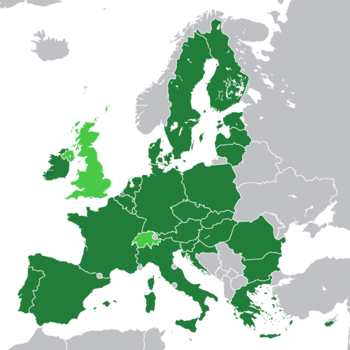
|
|
| Administrative body | European Commission |
| Official languages | 24 languages |
| Type | International organisation |
| Members | EU member states Associated states: Switzerland United Kingdom |
| Establishment | 1958 |
|
• Euratom Treaty
|
1 January 1958 |
|
• Merger Treaty
|
1 July 1967 |
The European Atomic Energy Community (often called Euratom) is an international organization. It was created on March 25, 1957. Its first goal was to set up a special market for nuclear power in Europe. This meant developing nuclear energy and sharing it among its member countries. Any extra energy could be sold to countries outside the community.
Over time, Euratom's work has grown a lot. It now covers many areas related to nuclear power and ionising radiation. This includes making sure nuclear materials are safe, protecting people from radiation, and helping to build the large international fusion reactor called ITER.
Euratom is legally separate from the European Union (EU). However, it has the same member countries. Many of the EU's main groups also govern Euratom. It is the only original community organization that is still independent of the EU. This means it is not under the direct control of the European Parliament. Since 2014, Switzerland has also worked with Euratom as an associated country.
The United Kingdom stopped being a full member of Euratom on January 31, 2020. This happened after it left the European Union. But, under a special agreement, the UK now works with Euratom as an associated country. This started on December 31, 2020.
Contents
History of Euratom
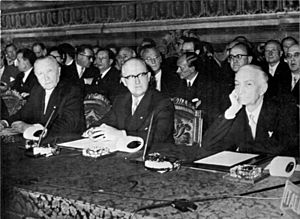
The idea for Euratom came mostly from France. France wanted to develop nuclear energy and nuclear weapons. They did not want to rely on the United States or the United Kingdom for this. Developing nuclear technology was also very expensive. So, France wanted to share these costs with other members of the European Coal and Steel Community (ECSC).
During the talks to create Euratom, the United States and the United Kingdom tried to gain influence. They created their own group, the European Nuclear Energy Agency (ENEA). This was a way to limit Euratom's power and influence how nuclear technology spread. The Soviet Union also tried to make people afraid of Euratom. They said it would help West Germany build nuclear weapons.
The Common Assembly suggested that the ECSC should also cover other types of energy. But Jean Monnet, who helped create the ECSC, wanted a separate group just for nuclear power. Louis Armand was asked to study how nuclear energy could be used in Europe. His report said that more nuclear development was needed. This would help make up for less coal and reduce Europe's reliance on oil.
Some countries, like Belgium, Netherlands, Luxembourg, and Germany, also wanted a general single market. France was against this idea because it wanted to protect its own industries. Jean Monnet thought a single market was too big and difficult to create at that time. So, he suggested creating two separate communities: one for atomic energy and one for the economy. This idea helped bring both groups together.
In 1956, leaders met at the Château of Val-Duchesse. They worked out the main parts of the new treaties. Euratom would help countries work together on nuclear matters. This was a very popular topic at the time. Euratom and the new economic community (EEC) would share the Common Assembly and the European Court of Justice. But they would have their own separate leaders. Euratom would have its own Council and Commission. These groups would have less power than the ECSC's High Authority.
On March 25, 1957, the Treaties of Rome were signed. These included the Euratom Treaty and the EEC Treaty. Six countries that were already ECSC members signed them. The treaties officially started on January 1, 1958.
To save money and resources, the separate leadership groups created by the Rome Treaties were combined in 1965. This happened through the Merger Treaty. The groups that ran the EEC took over the responsibilities for the ECSC and Euratom. All three then became known as the European Communities. Even though they were legally separate, they worked together. In 1993, the Maastricht Treaty created the European Union. This treaty brought the Communities into a new structure. But Euratom still kept its own separate legal identity.
There was a plan to combine all past treaties into a single European Constitution. This would also give the European Parliament more power. The Euratom treaty had not been changed as much as other treaties. So, the European Parliament had little power over it. However, the Euratom treaty was left separate from the rest of the EU for a reason. Many people in Europe were against nuclear power. Changing the treaty might have made voters turn against it. Because of this, the Euratom treaty remains mostly unchanged from when it was first signed.
Euratom's Place in EU History
This timeline shows how Euratom was created and developed. It also shows that Euratom is the only original European Community group that has not been fully absorbed into the European Union.
Since the end of World War II, sovereign European countries have entered into treaties and thereby co-operated and harmonised policies (or pooled sovereignty) in an increasing number of areas, in the European integration project or the construction of Europe (French: la construction européenne). The following timeline outlines the legal inception of the European Union (EU)—the principal framework for this unification. The EU inherited many of its present responsibilities from the European Communities (EC), which were founded in the 1950s in the spirit of the Schuman Declaration.
| Legend: S: signing F: entry into force T: termination E: expiry de facto supersession Rel. w/ EC/EU framework: de facto inside outside |
[Cont.] | ||||||||||||||||
| (Pillar I) | |||||||||||||||||
| European Atomic Energy Community (EAEC or Euratom) | [Cont.] | ||||||||||||||||
| European Economic Community (EEC) | |||||||||||||||||
| Schengen Rules | European Community (EC) | ||||||||||||||||
| 'TREVI' | Justice and Home Affairs (JHA, pillar II) | ||||||||||||||||
| [Cont.] | Police and Judicial Co-operation in Criminal Matters (PJCC, pillar II) | ||||||||||||||||
Anglo-French alliance |
[Defence arm handed to NATO] | European Political Co-operation (EPC) | Common Foreign and Security Policy (CFSP, pillar III) |
||||||||||||||
| [Tasks defined following the WEU's 1984 reactivation handed to the EU] | |||||||||||||||||
| [Social, cultural tasks handed to CoE] | [Cont.] | ||||||||||||||||
Working Together
- Since 2014, Switzerland has been an associated country in Euratom programs. This means they work closely with Euratom.
- Since January 2021, the United Kingdom has also been an associated country in Euratom programs. This is part of the EU–UK Trade and Cooperation Agreement.
- As of 2024, Euratom has special agreements to work with ten other countries. These include Armenia, Australia, Canada, India, Japan, Kazakhstan, South Africa, Ukraine, the United States, and Uzbekistan.
United Kingdom's Withdrawal
The United Kingdom announced it would leave Euratom on January 26, 2017. This followed its decision to leave the European Union. The formal notice to leave Euratom was given in March 2017. It was clearly stated in the letter about leaving the EU. The UK's withdrawal only became official after long talks about the terms of leaving. These talks lasted for two years and ten months.
A report in May 2017 questioned if leaving Euratom was legally necessary. It suggested that the UK should stay a member for a bit longer. This would give time to make new plans.
In June 2017, the European Commission shared a paper about nuclear materials and safety equipment. It outlined important rules for these items. The next month, a paper from the House of Commons Library looked at what leaving Euratom would mean.
In 2017, some articles in newspapers raised concerns. They wondered if the UK would have enough nuclear fuel after 2019 if it left Euratom. They also talked about the need for new agreements for moving nuclear materials. Another article mentioned that new agreements would be needed for getting radioisotopes. These are used for cancer treatments.
Some UK politicians thought the UK could stay in Euratom. In 2017, some argued that this would need the agreement of the other 27 EU countries. It would also require changing or canceling the letter sent in March 2017.
The Nuclear Safeguards Act 2018 became law on June 26, 2018. This law made plans for nuclear safety after leaving Euratom.
The EU–UK Trade and Cooperation Agreement describes the UK's relationship with the European Union from January 1, 2021. This agreement allows the United Kingdom to take part in "all parts of the Euratom programme" as an associated country.
Euratom's Achievements
One important achievement of the Euratom Treaty is Article 37. This rule was a first for European laws. It set binding rules for countries to protect the environment and people across borders. This shows Euratom's early focus on safety and environmental care related to nuclear activities.
Euratom's Early Leaders
The Euratom Commission had five members. It was led by three different presidents when it was an independent group (from 1958 to 1967). All of these presidents were from France.
| No. | Portrait | President (Born–Died) |
Country | Started office | Left office | Commission | Party | Group | Electoral mandate | Refs | |
|---|---|---|---|---|---|---|---|---|---|---|---|
| 1 | 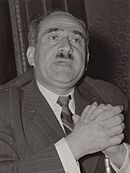 |
Louis Armand (1905–1971) |
France | 7 January 1958 | 2 February 1959 | Armand | Independent | None | – | ||
| 1 year, 26 days | |||||||||||
| 2 | 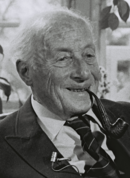 |
Étienne Hirsch (1901–1994) |
France | 2 February 1959 | 10 January 1962 | Hirsch | Independent | None | – | ||
| 3 years, 8 days | |||||||||||
| 3 | 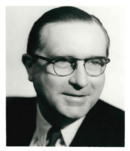 |
Pierre Chatenet (1917–1997) |
France | 10 January 1962 | 5 July 1967 | Chatenet | Independent | None | – | ||
| 5 years, 176 days | |||||||||||
See also
- EU Directorate General Joint Research Centre
- Energy Community
- Energy policy of the European Union
- History of the European Union
- Institutions of the European Union
- International Atomic Energy Agency
- Nuclear energy in the European Union
- The nuclear part of the Seventh Framework Programme for research and technological development.

